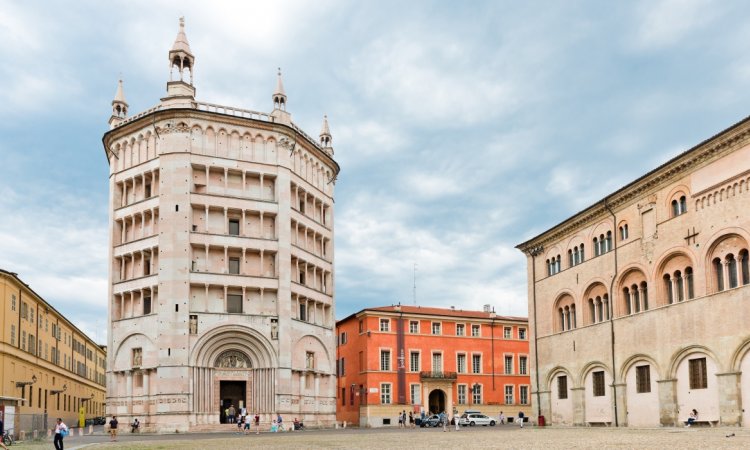
Parma is home to two of Italy’s most renowned culinary exports — Parmigiano Reggiano and prosciutto di Parma. Nestled in an area known as food valley, Parma has been producing key ingredients for Italian cuisine for centuries; today they are exported all over the world.
What makes this Italian cheese and prosciutto ham some of the best in the world? Part of the reason is both foods have DOP status (Protected Denomination of Origin). This means they’re certified as authentic only if they’re produced in a certain way in this part of the world.
Let’s take a look at both Parmigiano and Parma prosciutto to see why both products are world-class.
What is prosciutto?

Prosciutto is produced from the hind leg or thigh of a pig of wild boar. The word translates to “ham” in Italian. True prosciutto is dry-cured, sliced thinly, and served uncooked. When prepared in this style it can be called prosciutto crudo in Italian, or sometimes just crudo. The ingredients in making prosciutto are simple — just salt and the best ham, which is aged following a strict traditional process.
Why does the best prosciutto comes from Parma?
For a product to become prosciutto di Parma it must be made from pigs born and raised in one the ten regions of north-central Italy. From there they’re brought to Parma, which has an ideal microclimate for the production of prosciutto. A high altitude, south-facing exposure, and a gentle breeze from the Ligurian Sea coming in to dry the hams makes for a perfect product.
Other forms of Italian prosciutto exist, but only dried ham produced in this way can become the celebrated prosciutto di Parma.
What about Parmigiano Reggiano?
Parmigiano Reggiano has existed in the region of Parma Italy since the Middle Ages. The process of creating the cheese was refined by monks in the 14th Century. It’s mostly made by hand in the same way today.
Parmigiano Reggiano comes from a simple base of ingredients: raw cow’s milk, natural calf rennet and salt — aged according to a unique process. The milk here is key. Cows must be raised and fed in the area surrounding Parma; this contributes to the quality of the milk.
To make Parmigiano Reggiano, cheesemakers begin by removing springy bits of curd from milk-filled caldrons. The curd is then dried and shaped into the form of a wheel. This wheel is soaked in sea-salt solution for nearly a month and then aged for approximately one year.
A pinnacle of craftsmanship
Each wheel of cheese and each leg of ham is slightly unique, making these results the work of master artisans. Some of the best examples will be served in local Parma restaurants. The rest will be shipped around Italy and worldwide.
When it comes to food, Parma has no comparison in the area of these specialty high-end hams and cheeses. Understanding the dedication and craftsmanship that goes into creating them is key. Hopefully learning how Parmigiano Reggiano and prosciutto di Parma are made will boost your delight and enjoyment in them — whether during your next trip to Italy or back at home.


